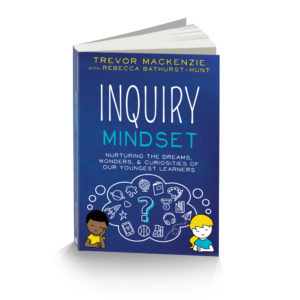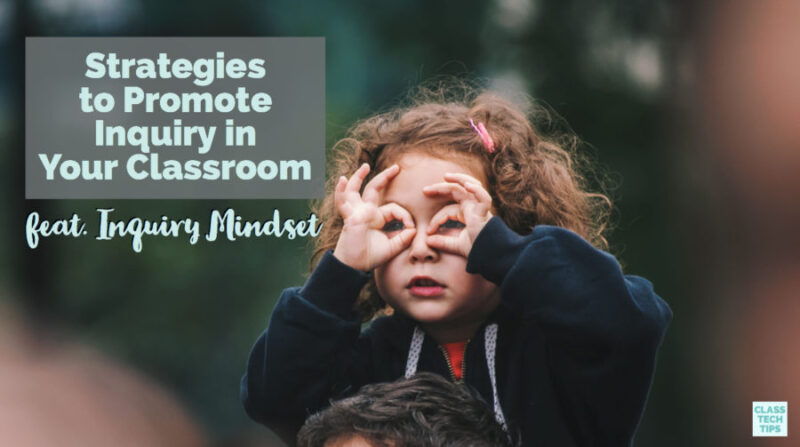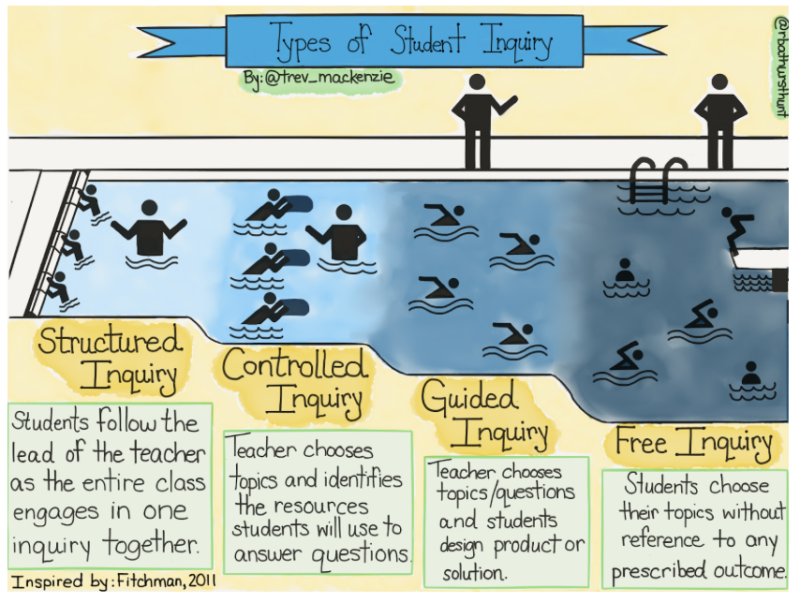When students take part in inquiry-based learning they pose questions and research issues. Promoting inquiry in your classroom can take many forms. So I was excited to connect with Trevor MacKenzie who has written books on the subject. His new book Inquiry Mindset: Nurturing the Dreams, Wonders, and Curiosities of Our Youngest Learners, co-authored with Rebecca Bathurst-Hunt dives into this topic.
Strategies to Promote Inquiry
In addition to the interview with Trevor shared below, I wanted to give you three strategies to promote inquiry in your classroom. Like most of the lesson ideas and strategies I share on this site, you can tailor these five to the needs of your students as well as your content area goals for the school year.
Sketchnoting
Sketchnoting is so much more than doodling and drawing. It’s a way for students to make connections and keep track of learning visually. As they gather questions, synthesize information, or pull together resources, students can sketchnote to keep track of their thinking. In this blog post I share a few tools for sketchnoting, including Paper53 which is an iPad favorite. Trevor shares more tips for sketchnoting below.
Wonder Wall
As a professional development provider, I spend a lot of time in classrooms. Whether I walk into a classroom with students I see a few times a year, or I’m leading a demo lesson at a school I’ve never visited before, I love to listen in to student questions. Nearpod is a go-to presentation tool when modelling formative assessment strategies in classrooms. Their new Collaborate feature is perfect for collecting student questions. Similar to Padlet, students can pose questions they have if you set up a wonder wall using virtual sticky notes within a Nearpod lesson.
Project Process
When students are in the midst of an inquiry-based learning project they can keep track of their progress with Spark Page. This free website creation tool lets students combine text, images, links, and videos on a page. Since this tool lets students republish their updated website after making changes, it is an excellent choice for keeping track of a project.
Inquiry Mindset: Inspiring Students
Earlier this year I connected with Trevor MacKenzie the co-author of Inquiry Mindset: Nurturing the Dreams, Wonders, and Curiosities of Our Youngest Learners. Trevor and his co-author Rebecca Bathurst-Hunt are passionate about the power of curiosity in the classroom. They have a deep understanding of the power of inspiring a love of learning in our youngest students. Their book tackles this topic and provides actionable information for educators. Trevor was kind enough to answer a few questions about his new book and inquiry in the classroom.
What inspired you to write a book about inquiry in the classroom?

My students have inspired me to take on a more personalized lens to teaching and learning. Exploring their passions, interests, and curiosities in the classroom and connecting them to our curriculum has shown me that amazing things can happen when students have a more authentic role in the classroom.
My colleagues have inspired me to share my inquiry journey with a broader audience. I love working with passionate teachers who are committed to asking big questions of themselves. Questions like: “Am I doing it right? Am I doing enough? How can I better meet the needs of my students?” It’s in these questions that I find myself getting inspired each and every year as an educator. Being around educators with similar goals and a passion for teaching is powerful stuff!
And last, my own children, Ewan (9) and Gregor (6) have inspired me to write Dive into Inquiry and Inquiry Mindset. Their unique personalities, curiosities, strengths, and challenges, have all provoked me to help bring positive and lasting change to education. My work in inquiry, in a truly roundabout and nebulous way, is to honor them in their journey as a learner in our schools and to bring the change I believe they deserve to experience.
What do you think is the biggest misconception about inquiry in the classroom?
One misconception I witness time and time again is that inquiry is merely free time. That it’s messy and uncontrollable, and standards and learning objectives won’t be met or assessed. An inquiry — rich, sustained and intentional inquiry — couldn’t be further from this misconception.
Although inquiry can be incredibly freeing it is not merely free time. The more voice and choice students experience in the classroom, the more structures and processes the inquiry teacher utilizes to best support students with having more agency over learning. Whether these structures are student check-ins, 1-on-1 conferences, Google Forms reflections, or small teacher-led seminars to introduce a needed skill or understanding, structure is a critical feature in the inquiry classroom. This formative feedback helps students stay on track whilst also providing the inquiry teacher with valuable insight into how to help all students succeed. Teachers are mindful of their planning and intentional with their language to support students in their new role in the classroom.
If a teacher is excited about this concept and wants to jump in, what is one thing they can do tomorrow to get started?
I would suggest starting with this sketchnote titled the Types of Student Inquiry (see below). This strategy helps educators see themselves and their past experiences in the classroom as having roots in inquiry. We have all explored a more personalized approach to learning, and when we reflect on this, we can all begin to see a safe entry point into adopting more inquiry into our practice.
The sketchnote can also help teachers begin to plan their inquiry units for students. My advice is to start in the shallow end in Structured Inquiry. Think of a unit of study that was highly engaging for your students and then you can roll out in the coming months. Then consider how you can begin to tweak this unit to have more of an inquiry structure to it. Maybe you frame the unit in an essential question. Perhaps you use a provocation as your start point into the unit. Or perhaps you leverage some voice and choice when it comes to your formative and summative assessments.
In closing, consider dreaming big and starting small. Dream of the classroom you want for your students three or four years from now and keep this vision in mind as you roll out inquiry in your practice. But know it won’t all happen at once. Take small steps each day towards making this dream a reality. Over time these small steps will result in authentic and genuine inquiry in your classroom.
Learn more about Trevor and Rebecca’s new book, Inquiry Mindset: Nurturing the Dreams, Wonders, and Curiosities of Our Youngest Learners, by heading over to Amazon!








